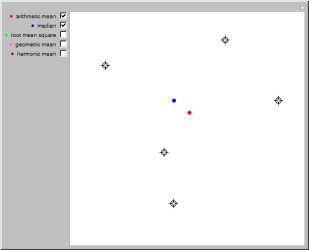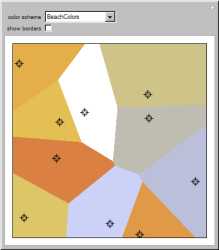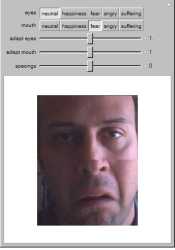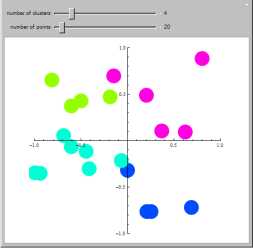COLBY
Gives us eleven points, including the
meth lab. I see a map with a bunch of
dots on it -- I figure you can tell
me something -- maybe even find his
stash house --

CHARLIE
We know the order that the locations
were arrived at -- what about doing a
time series analysis of overlapping
Dirichlet Tessellations?
Larry considers this for a beat -- then --
LARRY
Wow.

The
Voronoi diagram (also called
Dirichlet tessellation) for a set of points
S in the
plane is a partition of the plane into
convex polygons, each of which consists of all the points in the plane closer to one particular
point of
S than to any other.
Colby sits at a computer, running through a SERIES OF MUG
SHOTS as Don enters...
DON
Any luck?
COLBY
Facial recognition software, my brain
is not. But I've been through Intel's
whole dossier on The New American
Front, and I'm pretty sure he isn't in
there. Hooper giving us anything yet?

Facial expressions of happiness, fear, anger, and suffering can be reduced to the shapes of eyes and mouths. As
suggested by Adolphs, Tranel and Damasio, and Patrik Vuilleumier, the perceived emotions in facial expressions involve
processing by the amygdala.
Charlie, Amita, and Larry a swirl of activity, as, on
THE MAP --
Almost an inversion of what we've previously seen; the
spiderwebbed cracks are faded, and the highlighted zones
are where no streets had been touched --
CHARLIE
How're we doing with the cluster
radius changes?
AMITA
Almost entered --

Cluster analysis groups data elements
according to a similarity function. In this case, the similarity function is simply the
Euclidean distance function, which allows
us to group them into clusters automatically based on how close they are.




